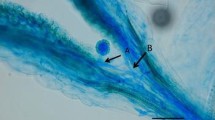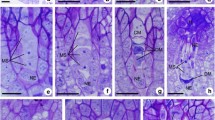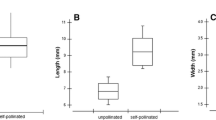Abstract
It is generally accepted that most angiosperms require an accurate balance between maternal and paternal genome contribution for endosperm development. The endosperm balance number (EBN) hypothesis postulates that each species has an effective number which must be in a 2:1 maternal to paternal ratio for normal endosperm development and seed formation. The aim of this work was to investigate the effect of different sources and ploidy levels of pollen donors on endosperm formation and seed production of aposporous tetraploid (2n=4×=40) Paspalum notatum. Hand-emasculated spikelets of an apomictic 4× plant were dusted with pollen of 2×, 4×, 5×, 6× and 8× races of the same species; 3× and 4× races of a phylogenetically closely related species, P. cromyorrhizon; and 2× and 4× races of P. simplex, a species of a different subgenus. Experiments including self-pollination as well as emasculation without pollination were conducted for controls. Results indicated that apomictic 4×P. notatum is a pseudogamous species with effective fertilization of the two unreduced (2n) polar nuclei by a reduced (n) sperm. Endosperm development and seed production occurred independently of the species or the ploidy level of the pollen donor. However, seed germination rates were significantly lower than in the self-pollinated control when the pollen donor was 3×P. cromyorrhizon or 2× and 4×P. simplex. Aposporous embryo sacs in Paspalum contribute to endosperm formation with two unreduced (2n) polar nuclei, while the male contribution is the same as in sexual plants (n). Since sexual Paspalum plants fit the EBN hypothesis, the EBN insensitivity observed in apomictic plants might be a prerequisite for the spread of pseudogamous apomixis. The EBN insensitivity could have arisen as an imprinting consequence of a high maternal genome contribution.
Similar content being viewed by others
Author information
Authors and Affiliations
Additional information
Received: 20 February 1998 / Revision accepted: 21 October 1998
Rights and permissions
About this article
Cite this article
Quarin, C. Effect of pollen source and pollen ploidy on endosperm formation and seed set in pseudogamous apomictic Paspalum notatum . Sex Plant Reprod 11, 331–335 (1999). https://doi.org/10.1007/s004970050160
Issue Date:
DOI: https://doi.org/10.1007/s004970050160




